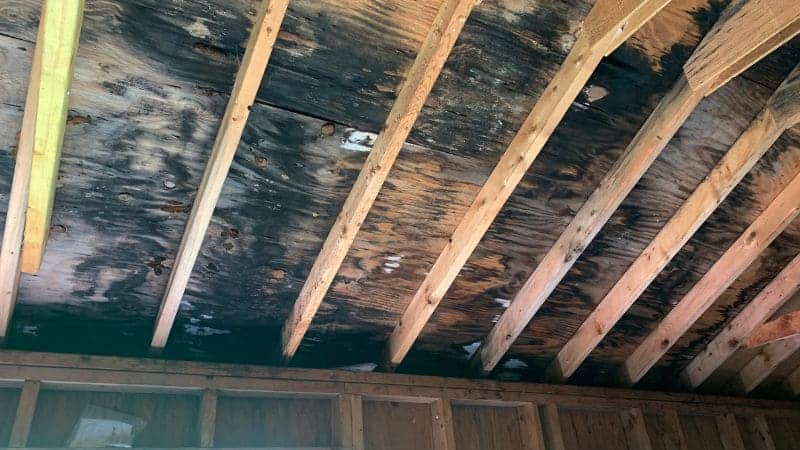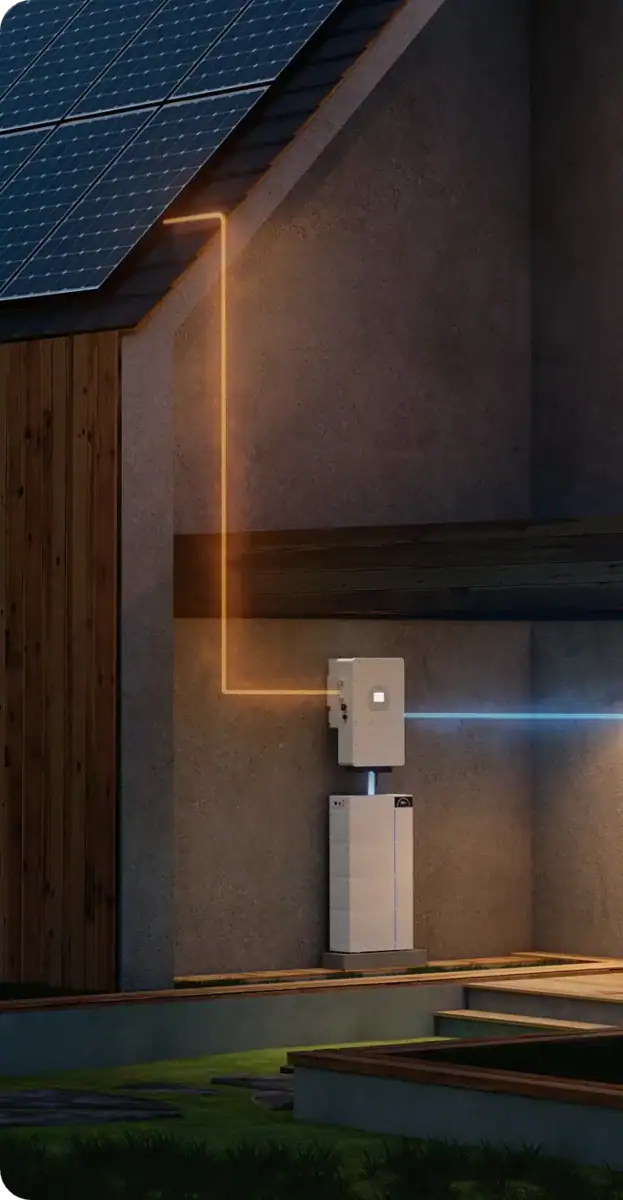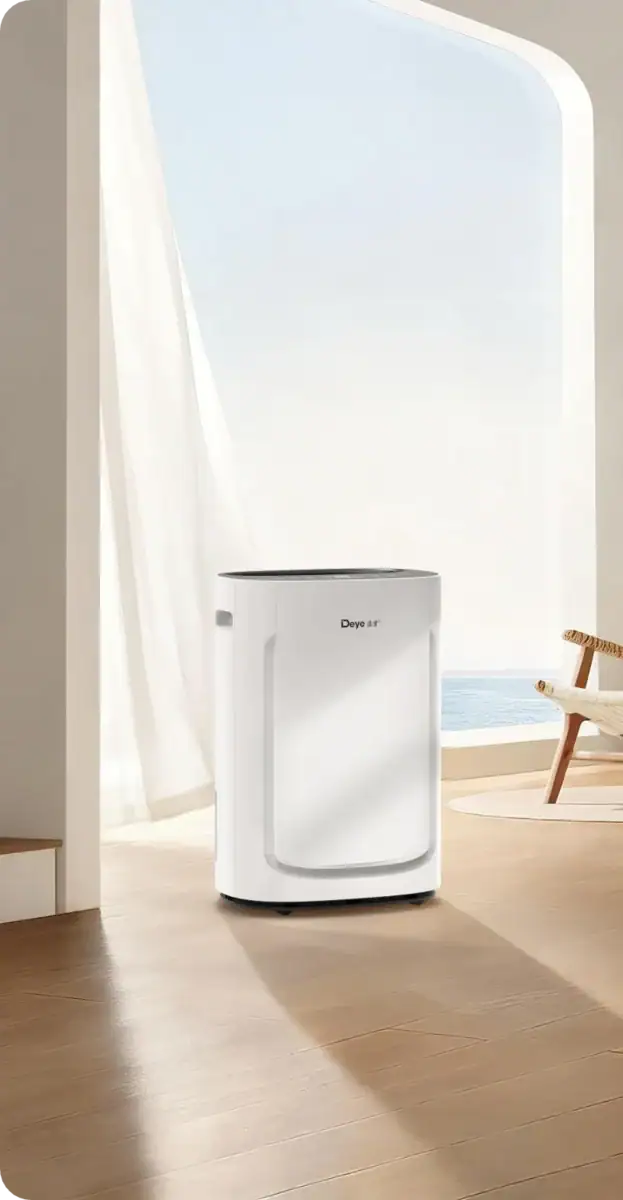
When you find that your windows are always full of moisture, your furniture surfaces and walls are always prone to mold spots and wet stains, your floors are difficult to dry, it means your room is in a high-humidity situation.
As a homeowner, are you troubled by excessive humidity in your house? This article is a complete guide explaining the measurements and causes of high humidity and how to improve it.
What is a Reasonable Humidity For Your House?
Humidity is the amount of water vapor in the air. Relative humidity is the percentage of water vapor present in the air relative to the maximum amount the air can hold at a given temperature. Your comfort is closely tied to the relative humidity inside your house; the ideal range is between 30% and 50%. You can use a hygrometer to measure the humidity in your house. When indoor humidity goes above this range, it can make your home feel overly stuffy and can interfere with your body’s natural ability to regulate temperature.
Signs of Too-High Humidity
To protect your home, you can carefully observe whether the following conditions appear in your home or not. If the signs are obvious in your home, take measures as soon as possible.
Visible Condensation
Water droplets or moisture buildup on windows, walls, pipes, or other surfaces. This is one of the most visible signs of excess moisture.
Musty Odors
A damp, musty smell is an indicator of mold/mildew growth, which thrives in humid environments.
Mold Growth
Actual mold growth on walls, floors, ceilings, or corners is a clear sign of persistent high humidity. Mold may appear as black, green, or white patches.

Peeling Paint or Wallpaper
High humidity can cause paint to peel and wallpaper to loosen from surfaces.
Warped Wood
Excessive moisture can cause wood floors, furniture, cabinets, etc., to warp, crack, or become discolored.
Musty Smell on Fabrics
Clothing, upholstery, or fabrics—including frequently worn items like socks and footwear—may develop a musty, damp odor when exposed to high humidity for long periods.
Health Issues
Increased respiratory problems, allergies, asthma attacks, or skin irritations can be exacerbated by high humidity levels.
Why the Humidity of the House is so High?
Before solving the problem of high humidity in your home, it is important to understand what the real causes of high humidity are.

Moisture Intrusion from Outside
One of the main causes of high humidity in houses is moisture entering from the outside through leaks or poor sealing. This could be due to
Leaky windows and doors
- Cracks or gaps in the home’s exterior allow humid outside air in
- Moisture seeping in from crawlspaces or basements
Poor Ventilation
- Not using exhaust fans in bathrooms and kitchens
- Closed-up homes with little air exchange
Indoor Moisture Sources
Many everyday activities add moisture to the indoor air, including:
- Cooking
- Long hot showers
- Drying clothes indoors
Problems with your heating, ventilation, and air conditioning (HVAC) system
- An air conditioner size is too small for the home
- AC is not running long enough to dehumidify
- Leaky or poorly insulated ductwork
Climate
Warm and Humid Climates
Houses located in warm, humid climates like tropical or subtropical regions tend to have higher indoor humidity. The warm outdoor air holds more moisture, which can infiltrate into the home through open windows, doors, and cracks.
Rainy Weather
Periods of heavy rainfall or high outdoor humidity from rain can increase indoor humidity levels as the moist air enters the home.
Coastal Areas
Homes near the coast or large bodies of water are exposed to humid air from the evaporation of water, leading to higher indoor humidity.
Summer Season
During the summer months, warmer temperatures allow the air to hold more moisture, resulting in higher relative humidity levels both outdoors and indoors.
How to Reduce the Humidity in Your House?
Reducing excess humidity in your house can be a tough task. It also depends on which areas of your home are humid and need to be lowered, or if the entire home is experiencing high humidity. Here are some things you can do to improve the problem of excessive moisture in your home.

Use Dehumidifiers
One of the most effective solutions is to use dehumidifiers to gain a lower humidity. They work by pulling moisture in the air and collecting it in a tank that needs to be emptied regularly.
- Whole-house humidity control: consider installing a whole-house dehumidifier integrated with your HVAC system. This is the most efficient and comprehensive option.
- Specific humid areas control, like basements, bathrooms, or laundry rooms, use portable dehumidifiers. Place them in the most humid areas and make sure they are properly sized for the space.
- Empty the dehumidifier tanks regularly or set up a drain hose for continuous drainage if possible.
Improve Ventilation
Proper ventilation helps remove humid air from your home.
- Use exhaust fans in bathrooms and kitchens when showering, cooking, or running the dishwasher to vent out humid air.
- Open windows when outdoor air is drier than indoor air to ensure good ventilation.
- Make sure clothes dryers are vented outside, not into the home.
Reduce Moisture Sources
- Limit activities that add moisture to your indoor air.
- Take cooler, shorter showers to produce less steam.
- Cover pots when cooking to reduce steam.
- Dry laundry outside or use a vented dryer instead of air-drying indoors.
- Limit the number of indoor plants as they release moisture into the air.
Other Tips
- Use air conditioning, as it removes moisture from the air while cooling.
- Seal air leaks around windows, doors, and cracks to prevent humid outdoor air from entering.
- Insulate walls, floors, and ceilings to prevent condensation.
- Use a dehumidifying solution like baking soda, rock salt, or desiccants in problem areas.
By employing a combination of these methods, you can effectively reduce humidity levels and make your home more comfortable. Be sure to monitor humidity with a hygrometer and adjust strategies as needed.
Benefits of Putting a Dehumidifier in Your House
A dehumidifier is not only a tool to keep a reasonable humidity in your house. It also has some other benefits.

Reduces Mold and Mildew Growth
Mold and mildew thrive in damp environments. By reducing humidity levels, a dehumidifier makes it harder for mold and mildew to grow on surfaces like walls, ceilings, and floors. This helps prevent structural damage and potential health issues caused by mold exposure.
Eliminates Musty Odors
Excess moisture can lead to musty, unpleasant odors in your home. A dehumidifier removes this moisture from the air, eliminating odors caused by mold, mildew, and bacteria.
Protects Belongings
High humidity can damage furniture, books, electronics, and other belongings by causing swelling, warping, or corrosion. Dehumidifiers help protect your possessions by keeping humidity levels in check.
Improves Air Quality and Your Health
Dehumidifiers reduce dust mites, mold spores, and other allergens that thrive in humid environments. This can provide relief for those with asthma, allergies, or other respiratory issues.
Increases Comfort
Humid air feels sticky and uncomfortable. By lowering humidity levels, a dehumidifier makes your home feel cooler and more comfortable without having to lower the temperature as much.
Energy Cost
Dehumidifiers are designed specifically for dehumidification, while air conditioners have to cool the air first before removing moisture as a byproduct. This means dehumidifiers can remove the same amount of moisture using less energy










